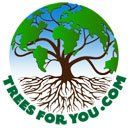Trees are energy driven organisms and need a constant source of energy to survive. When trees have a high level of energy they tend to thrive and when energy levels are low, they experience physiological stress and may decline or die. Trees need energy for four basic functions: growth, cellular maintenance (including reproduction), storage and defense. Trees derive food (sugars) from the process of
Photosynthesis. During photosynthesis liquid sugars such as glucose are produced and used as needed by the tree for the basic functions; excess sugars are converted to starch solids and stored in cells within stem and root tissues. The stored starches can be converted back to useable liquid forms of sugar and used as an energy source when needed by the tree. The stored starches are referred to as the tree’s “energy bank”. When trees
use
the sugars manufactured from photosynthesis this process is called
respiration. So, the process of
photosynthesis makes food and the process of
respiration uses food. It is important that net photosynthesis
exceeds
net respiration or the tree will decline. If trees continue to use food (respire) at a faster rate than they make food the tree will die.
Before a tree is pruned it is important to assess its health or more precisely its energy state. A tree with high energy (or good health) can tolerate more pruning than a tree in a low energy state (or poor health). A tree with good health will display certain characteristics such as vigorous shoot growth at the branch tips, high crown density (very little sunlight visible through the tree’s canopy) and a high live crown ratio (LCR). LCR is a measurement of the foliated portion of the tree measured from ground level to the top of the tree. A tree with a height of 50’ that has 25’ of clear trunk without foliated branches will have a LCR of 50%. A LCR of 60 – 70% is preferable for urban trees. The section on pruning discusses reasons for pruning. Some pruning is necessary and unavoidable, but unnecessary pruning should always be avoided. Assessing the current health of a tree before pruning and factoring in species characteristics will determine how much pruning the tree can withstand.
When a healthy branch is removed from a tree three negative impacts occur. (1). The food making organ (leaves) are removed thus reducing net photosynthesis. (2). Stored energy reserves in the branch tissues are lost. (3). An open wound is left after a branch is removed. An open wound is a 911 call to the tree as decay causing pathogens will immediately colonize on the face of open wounds and then progress into the tree. The tree must send food to the wound site to begin the external formation of callus tissue to seal the wound and then produce woundwood, that if successful, will eventually close the wound. In addition, the food will be used to start the complex internal defense mechanism of compartmentalization. Compartmentalization of decay in trees (CODIT) is an internal process whereby the tree builds physical and chemical walls to prevent or at least minimize the spread of decay into the wood present at the time of wounding and also into the new wood that forms after the wounding.
Natural branch shedding occurs when branches wither and die such as when branches decline from over-canopy shading that reduces photosynthesis. When this occurs, the branch has time to seal off the vessels at the point where the branch is attached to the trunk. When the branch finally sheds the exposed area is minimalized. Pruning healthy branches “shocks” the tree particularly if there are multiple pruning cuts. The tree must rush energy reserves to the open wounds in an attempt to prevent the invasion of decay causing fungi. The spores of the fungi are ubiquitous and carried in air currents. They will begin colonizing on the cut surface of the branch following pruning. This is why wound dressings do not prevent decay. The tree must solve the wound through woundwood and compartmentalization. However, these processes require a considerable expenditure of energy and if the energy reserves are low or the wounds are too great decay may win the war. Keeping a tree healthy and pruning for structure early will significantly increase the longevity of a tree.
Pruning a young tree early requires only small pruning doses and a minimum number of cuts. Structural pruning establishes a central leader and permanent branches that have proper height clearance so that large lower branches will not have to be removed later. In addition, branches are spaced radially and longitudinally to avoid over-loading and the need for future thinning. If pruning is forestalled, many large branches will need to be removed later and the tree may not be able to handle the physiological stress and resulting decay.
We at TreesForYou.com are dedicated to maintaining your trees in a healthy growing condition and increasing their longevity!



